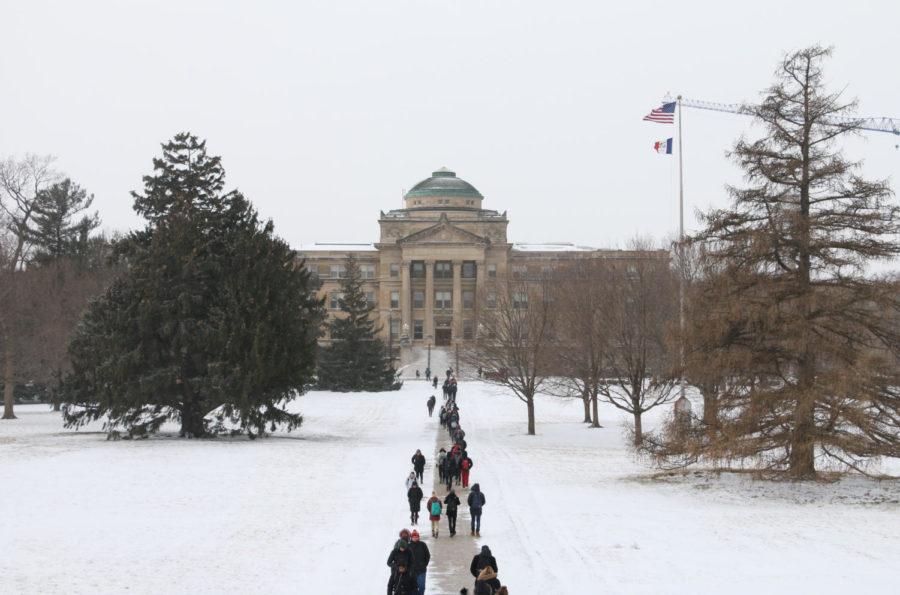Even with extreme cold temps, climate change is continuing
Emily Blobaum/Iowa State Daily
Students walk between Curtiss and Beardshear halls during a snowstorm on Jan. 11, 2018. Despite a 12-hour winter weather advisory, the university remained open.
January 24, 2018
Since the end of last year several parts of the United States and around the globe have been experiencing record breaking cold temperatures on numerous occasions. Over the past few weeks, this cringing cold spell contributed to making this years Ball Drop in Times Square one of the coldest New Years celebrations in history, with it being the second coldest ball drop ever on record.
Along with a cold New Year’s Eve celebration, many cities across the U.S. found the first week of 2018 to be their coldest first week of a new year ever to be recorded.
New York City and Syracuse were just some of the cities on the East Coast who started their first week of the new year with their coldest first week yet. During the first week of this year, many cities in the Midwest such as Detroit experienced their coldest on record with an average temperature of just 6.4 degrees Fahrenheit.
Even with all of the record cold temperatures being set over the past weeks, recent years have shown that this arctic uprising is a rare occurrence in comparison to the long term trends of recent global temperature records.
Bill Gutowski, professor of geological and atmospheric sciences and College of Liberal Arts and Sciences’ associate dean at Iowa State, has spent much of his time researching climate and atmospheric dynamics. Gutowski is a part of the United Nations Intergovernmental Panel on Climate Change in which he helped earn a Nobel Peace Prize for in 2007.
“You have to step back and look at the behavior of the past few decades to really get a clear sense of what the overall trend is,” Gutowski said.
Although this winter has so far continued to break records across the globe, 2017 was still found to be the third warmest year on record, only falling behind 2016 and 2015.
Compared to other years, what makes 2017 and the recent winter cold spell so abnormal is that 2017 still managed to be the third warmest year on record without the effects of El Nino.
El Nino is an irregularly occurring weather phenomenon which results from warmer ocean temperatures in the Pacific Ocean. El Nino in general significantly impacts weather patterns around the globe and most of the time eminently warms up our global temperatures. An overwhelming majority of the years that have set record high temperatures have occurred during El Nino. 2017 has became the warmest year ever recorded that did not experience an El Nino.
For experts in the field of global climate like Gutowski, 2017 being such a record setting warm year without the help of an El Nino is very telling when it comes to overall climate concerns like global warming.
“It’s important to keep in mind that the whole world is not necessarily in lockstep with what is going on here in Iowa or even the upper Midwest,” Gutowski said.
Even though it may seem as if we are heading toward a direction in which the earth is no longer feeling the effects of global warming, that isn’t the case.
According to NASA, 16 out of the 17 warmest years on record have occurred since 2001 and the majority of the warming has occurred over the past 35 years.
Over the past few decades there has been more warm temperature records being set than cold temperature records. With 2017 being so abnormally warm it is unusual that we have seen such bone-chilling temperatures over these past few weeks.
The recent cold spells don’t point to a fact that climate change has suddenly reversed.







